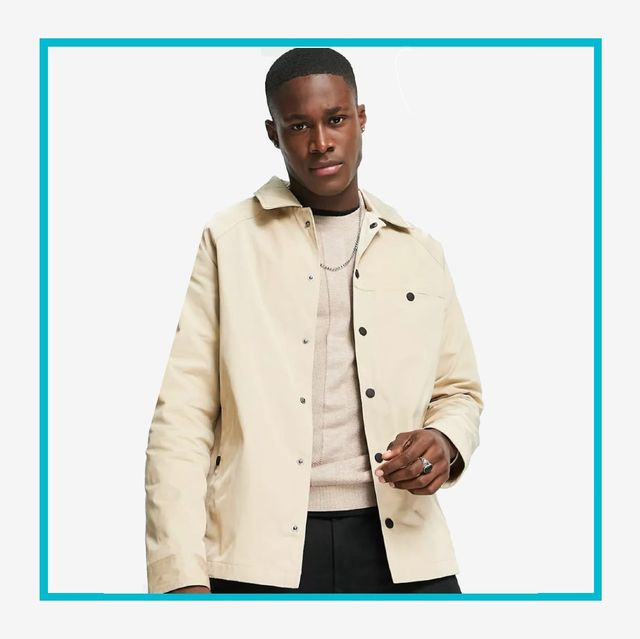The Importance of Sustainable Clothing: Exactly How It Impacts the Setting and Your Storage room
Lasting apparel is progressively identified for its critical function in decreasing the ecological effect of the fast fashion business. By concentrating on eco-friendly materials and moral manufacturing techniques, it deals with pushing eco-friendly problems. This change not just profits the earth yet likewise affects customer choices, resulting in a more thoughtful approach to closet administration. Understanding these dynamics increases crucial questions concerning fashion's future and individual responsibility in shaping it.
The Ecological Footprint of Fast Style

Benefits of Lasting Products
Sustainable products supply considerable advantages, particularly via environmentally friendly fabric selections that decrease ecological damage. These materials also demonstrate resilience and durability, decreasing the need for frequent substitutes. As an outcome, they contribute to a more lasting apparel industry and advertise accountable customer behavior.
Eco-Friendly Fabric Selections
While the fashion business has long been associated with quick patterns and ecological injury, the surge of eco-friendly material selections presents a transformative opportunity. Lasting materials such as natural cotton, hemp, and Tencel have actually obtained popularity due to their lower ecological effect. These fabrics are frequently generated without dangerous pesticides and require much less water, decreasing their carbon footprint - Branded Clothing. Additionally, lots of environment-friendly fabrics are eco-friendly, contributing to a round economy by lessening waste. Choosing sustainable products not only sustains environmentally liable practices yet also advertises healthier ecosystems. As consumers become a lot more familiar with their acquiring power, the demand for green materials encourages brands to introduce and take on more sustainable manufacturing approaches, ultimately profiting the planet and future generations
Durability and Durability Benefits
Several customers are increasingly identifying the resilience and durability advantages of lasting products in their clothing choices. Unlike traditional textiles, sustainable materials such as natural cotton, hemp, and recycled polyester are crafted to withstand wear and tear, resulting in garments that last much longer. This minimized frequency of replacement not only saves customers cash with time yet additionally decreases waste produced by fast fashion. On top of that, lasting apparel often employs environment-friendly manufacturing techniques that enhance material strength, adding to a decrease in the general carbon impact. By buying durable clothing, consumers can grow an extra lasting closet while taking pleasure in top quality items that preserve their visual and functionality over time. Consequently, resilience and longevity stand as key advantages of choosing lasting materials.
Minimizing Waste With Sustainable Practices
Decreasing waste in the apparel industry can be accomplished through cutting-edge practices such as upcycling and repurposing products. Additionally, embracing minimal wardrobe strategies motivates consumers to focus on high quality over quantity, inevitably decreasing apparel usage. Together, these strategies contribute greatly to an extra sustainable clothes version.
Upcycling and Repurposing Products
Upcycling and repurposing materials have actually emerged as cutting-edge techniques in the fashion business, changing thrown out fabrics into useful brand-new products. This method not just minimizes waste however likewise encourages imagination and uniqueness in clothes style. By taking old garments and products, designers can create unique pieces that reflect individual design while reducing the demand for brand-new sources. Additionally, upcycling usually requires much less power and water contrasted to traditional manufacturing processes, considerably reducing the ecological footprint of fashion. As consumers end up being extra familiar with sustainability, the appeal of upcycled clothes remains to climb, promoting a circular economic climate. Inevitably, these techniques contribute to a more lasting future, where style focuses on environmental wellness over rapid manufacturing and consumption.

Minimal Closet Methods
As people significantly look for to decrease their ecological influence, taking on minimal closet strategies has gained traction as an effective approach to lasting style. These approaches emphasize quality over quantity, motivating customers to curate a smaller sized collection of flexible, long lasting clothes. By concentrating on ageless pieces that can be mixed and matched, people can decrease the frequency of acquisitions and eventually lower waste.Additionally, minimalism advertises mindful intake, prompting buyers to show on the honest and environmental implications of their selections. This strategy not just fosters an extra lasting way of life but also simplifies day-to-day decision-making regarding clothing. As people embrace minimal principles, they add to a style culture that values sustainability and responsible consumerism, inevitably causing a more eco-conscious society.
The Duty of Honest Labor in Sustainable Style
While numerous customers are significantly aware of the ecological consequences of their clothing options, the value of ethical labor methods in lasting fashion can not be neglected. Honest labor encompasses reasonable earnings, secure working problems, and respect for workers' rights, developing the backbone of accountable fashion production. Brand names that prioritize honest labor not just uplift communities however also established a criterion for responsibility in the industry.Moreover, the assimilation of ethical methods cultivates transparency, allowing customers to make educated selections concerning their purchases. This method contrasts greatly with fast fashion's exploitative labor designs, which typically prioritize revenue over individuals. By sustaining firms committed to honest labor, customers contribute to a system that values human dignity along with environmental sustainability. Honest labor is not simply an add-on; it is necessary to the more comprehensive mission of lasting style, making certain that the pursuit for eco-friendliness does not come at the expenditure of human civil liberties.
The Effect of Sustainable Clothing on Carbon Emissions
Sustainable garments has the prospective to significantly decrease carbon emissions connected with the garment industry. Standard garment production contributes significantly to greenhouse gas discharges, mainly as a result of energy-intensive production processes and the use of non-renewable resources. On the other hand, sustainable style focuses on environment-friendly materials, such as natural cotton or recycled fibers, which often call for much less energy to produce.Moreover, lasting brands tend to adopt a lot more effective production methods, minimizing waste and decreasing overall discharges. By prioritizing sturdiness and timeless style, lasting garments encourages customers to purchase much less often, more minimizing the carbon footprint connected with overconsumption.Additionally, numerous lasting brands are devoted to transparency in their supply chains, making it possible for consumers to make informed choices that straighten with their values. Eventually, shifting towards lasting clothing can result in a substantial reduction in carbon exhausts, contributing to a healthier world and an extra sustainable future for the garment industry.
Sustaining Local Economies With Lasting Choices
The change towards sustainable apparel not only addresses ecological problems but also considerably benefits regional economic climates. By choosing sustainable fashion, customers commonly sustain small businesses and regional craftsmens, boosting area strength. These enterprises normally operate on a smaller sized range, focusing on workmanship and moral methods over mass production.Investing in locally made sustainable clothing fosters job creation and promotes economic growth within neighborhoods. As customers come to be a lot more familiar with the ecological influence of their acquisitions, they significantly look for out items that mirror their worths. This demand motivates local producers to embrace sustainable methods, contributing to a circular economy.Moreover, sustaining neighborhood organizations lowers transport exhausts, straightening with eco-conscious customer actions. The interconnectedness of lasting garments and regional economic climates underscores the vital role that individual selections play in advertising both economic and environmental health. By promoting these local connections, neighborhoods can prosper while also functioning in the direction of a more lasting future.
Transforming Your Storage Room: Tips for a Sustainable Wardrobe
As individuals look for to minimize their environmental impact, changing a wardrobe into a lasting wardrobe comes to be a necessary action. One efficient strategy is to review existing clothes, maintaining only things that are used routinely which align with sustainability objectives. Focusing on quality over amount is crucial; investing in durable pieces from environment-friendly brands can considerably decrease waste.Additionally, including Your Domain Name used things can breathe brand-new life into a closet while decreasing ecological damage. Organizing garments swaps with buddies or contributing unused things can even more advertise sustainability.When purchasing, individuals must look for materials that are organic, recycled, or biodegradable, and stay clear of quick fashion sellers - Branded Clothing. Practicing mindful intake by attentively taking into consideration each acquisition can contribute to a much more lasting way of life. By applying these pointers, one can develop a closet that shows personal design while sustaining environmental stewardship
Often Asked Concerns
Exactly How Can I Recognize Lasting Apparel Brands?
To determine lasting garments brands, one must investigate materials utilized, inspect for qualifications like Fair Profession, and check out the brand's transparency regarding their production processes, labor practices, and environmental impact, guaranteeing honest and environment-friendly techniques are focused on.
What Are the Expenses Related To Sustainable Fashion?
The expenses connected with sustainable style can differ significantly. Greater manufacturing expenditures, moral sourcing, and environmentally friendly materials usually bring about raised retail costs, which may hinder some customers while attracting eco mindful consumers.
Can Sustainable Garments Be Trendy and fashionable?
Sustainable clothes can certainly be trendy and elegant. Designers significantly prioritize innovative products and ethical manufacturing methods, verifying that fashion and sustainability can exist side-by-side. Consumers currently have diverse choices that mix aesthetic appeals with environmental consciousness.
Just How Does Laundering Clothing Affect Their Sustainability?
Cleaning clothing considerably influences sustainability by consuming water and power, contributing to pollution, and causing microplastic release. Constant cleaning can weaken materials, shortening their life expectancy and boosting the requirement for substitutes, ultimately worsening ecological problems.
What Is the Life Expectancy of Lasting Clothing Compared to Rapid Fashion?
The lifespan of sustainable apparel normally exceeds that of rapid style items, usually long-term numerous years as a result of top quality materials and workmanship. In comparison, quick style garments visit the site may degrade rapidly, requiring more frequent replacements. Lasting apparel is increasingly recognized for its important duty in lessening the environmental impact of the fast style sector. While many consumers are increasingly aware of the environmental consequences of their clothing choices, the importance of ethical labor practices in sustainable fashion can not be neglected. Branded Clothing. Sustainable clothing has the potential to significantly decrease carbon emissions associated with the fashion industry. In comparison, lasting style concentrates on green products, such as natural cotton or recycled fibers, which usually call for much less power straight from the source to produce.Moreover, lasting brand names tend to embrace a lot more effective manufacturing practices, reducing waste and lowering overall exhausts. By focusing on sturdiness and ageless style, sustainable apparel encourages consumers to acquire less regularly, further lowering the carbon footprint linked with overconsumption.Additionally, numerous lasting brand names are committed to openness in their supply chains, enabling consumers to make enlightened options that straighten with their values